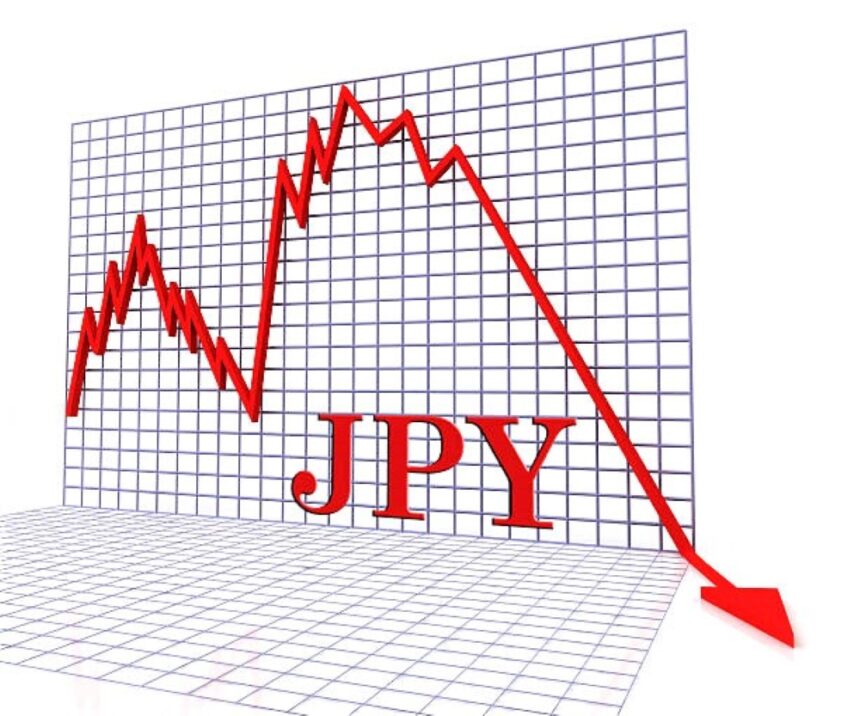Japanese yen remains down, near a multi-decade low.
The Japanese Yen (JPY) struggled to find traction throughout the Asian session on Tuesday. Remaining close to the 34-year low it reached versus the US dollar the day before. According to a report released on Monday. The Bank of Japan (BoJ) would concentrate less focus on inflation. And instead adopt a more discretionary approach to monetary policy formulation.
Fears of intervention and a softer risk tone may help prevent further losses for the safe-haven Japanese yen.
Meanwhile, BOJ Governor Kazuo Ueda stated that
After abandoning negative rates in March, the central bank will resume normal monetary policy. Allowing diverse indicators to drive future rate hikes. This adds to the Bank of Japan’s unclear outlook for future rate hikes, further undermining the JPY.
Reduced Fed rate cut bets propel the USD to a new YTD high and offer additional support to USDJPY.
In contrast, the markets pushed back expectations for the Federal Reserve’s (Fed) first interest rate cut. Following the release of higher than xpected US consumer inflation data for March. This implies that the substantial rate differential between the two countries will persist for some time. Which, together with a bullish US Dollar (USD), acts as a tailwind for the USDJPY. Meanwhile, recent jawboning by Japanese officials, combined with a softer risk tone, may help limit losses for the safe-haven JPY.
As a result, traders may be hesitant to place new bullish wagers on the currency pair. Due to overbought technical indicators on the daily charts.
Daily Market Movers: Japanese yen continues to fall on differing BoJ-Fed policy forecasts.
The Japanese yen remains pulled down by the Bank of Japan’s dovish view. Signaling that it is not in a hurry to normalize policy, which, along with a strong US dollar, keeps the USDJPY pair around a 34-year high.
The latest US data showed a strong economy and sticky inflation, casting uncertainty on how aggressively the Federal Reserve will be able to lower interest rates this year and sending US Treasury bond yields to a five-month high.
The U.S. Census Bureau Retail Sales grew 0.7% in March, beating market estimates of a 0.3% increase, while the prior month’s number was raised up to indicate a jump of 0.9% vs. 0.6% previously reported.
This helps to mitigate the disappointing announcement of the Empire State Manufacturing Index, which improved less than predicted to -14.3 in April from -20.9 and indicated persistent weakening in manufacturing company activity.
The markets currently expect less than two interest rate cuts by the end of 2024, compared to the Fed’s projection of three, lifting the US Dollar to its highest level since November and continuing to operate as a tailwind for the USDJPY pair.
Shunichi Suzuki, the Japanese finance minister, reiterated On Tuesday.
Shunichi Suzuki, the Japanese finance minister, reiterated On Tuesday, he stated that he is constantly monitoring FX movements and will take all necessary precautions, but declined to comment on whether the current FX fluctuations are too rapid or excessive.
Yoshimasa Hayashi, Japan’s Chief Cabinet Secretary, stated that currencies must move in a stable way that reflects fundamentals, and that excessive FX volatility is undesirable, yet it provides little solace to JPY bulls.
Expectations that the Fed will hold interest rates higher for longer, combined with the danger of further escalation of Middle Eastern hostilities, weigh on investor sentiment and offer support to the safe haven JPY, restricting advances in the USDJPY pair.
Traders now look to the US macro data: building permits, housing starts, and industrial production Figures and remarks by important FOMC members, including Fed Chair Jerome Powell, will provide some meaningful momentum later this Tuesday.









